Sony PlayStation Portable Review
Sony PlayStation Portable
To coincide with the European launch of the PSP, we've updated and republished our original review.
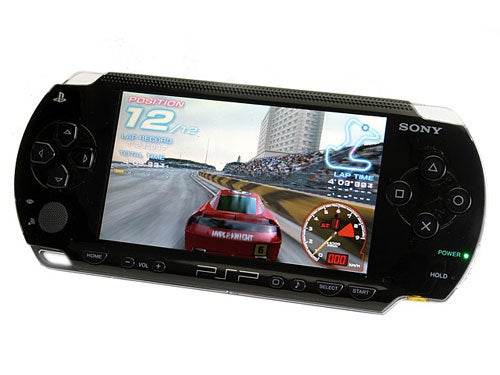
Verdict
Key Specifications
- Review Price: £179.00
”’Note:”’ With the European release of the PSP today, I have updated and re-published my original review of the PlayStation Portable from 28th January 2005.
I can still vividly remember when I bought my PlayStation 2 console. I had spent the best part of two hours wandering around the legendary Golden Arcade in Hong Kong and finally decided to give up on haggling over a few dollars and just put my credit card down. Of course I picked up pretty much every game that was available at launch while I was there, and couldn’t wait until I got home to fire up my new baby.
The hours I spent waiting for my flight, and the long journey home did little to dampen my excitement. Due to a disastrous clashing of work diaries, my wife was catching a plane to New York while I was landing at Heathrow airport, so I really did have nothing else to do when I arrived home but unbox the PS2 and get comfy on the couch.

Unfortunately, despite all my excitement and anticipation, when I sat down and played my PS2 I found the experience very disappointing. The problem was that the launch games on the PS2 were nothing special, and the Dreamcast had better software available at the time. Whether Sony rushed out the PS2 to kill off the Dreamcast is open to debate, but there’s no doubt that the PS2 didn’t live up to the expectations of original PlayStation users.
It was therefore with some trepidation that I watched the development of the PlayStation Portable (PSP). Although I firmly believed that Sony had the ability to create something truly special, my enthusiasm was held in check by my memories of the early PS2 days. However, when I finally got my hands on a PSP at the Consumer Electronics Show in Las Vegas last January, I realised that I shouldn’t have worried.
Put simply, the PSP is the most important thing to happen in the video game industry since the launch of the original PlayStation. I know what you’re thinking; that’s a pretty bold statement, especially since this is Sony’s first attempt at a hand-held gaming platform. But let’s remember that being the new kid on the block didn’t stop the original PlayStation from redefining video games.
The PSP is a triumph of design, and it looks incredible even before you switch it on. Finished in gloss black, with silver highlights, the PSP does for hand-held gaming what the iPod did for portable music players – it’s desirable on an aesthetic level, rather than a purely functional one.
The fascia of the PSP is dominated by the 4.3in TFT screen and I can pretty much guarantee that you’ve never seen a display like this on a hand-held device before. The screen has a 16:9 widescreen aspect ratio, making it ideal for watching movies as well as playing games, with a resolution of 480 x 272 and a full 24bit colour depth. The screen also incorporates Sony’s X-Black coating, so the image is amazingly bright and vivid. The image produced by the PSP display is just breathtaking, and I’ve yet to show this device to anyone that hasn’t been impressed by it.
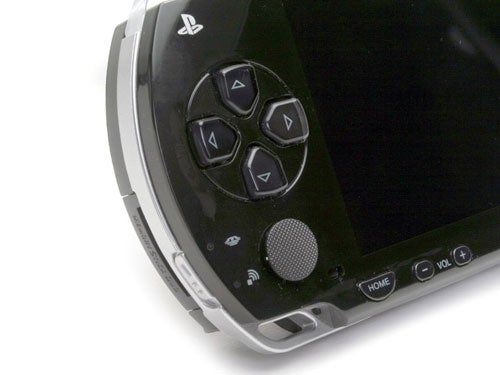
Unfortunately the screen on my PSP has three dead pixels at the top, which is somewhat annoying. I don’t really notice them when I’m playing games or watching video, but just knowing they’re there bothers me. Having looked around the Internet, it’s clear that dead pixels on the screen is common with the PSP, and some users have found as many as 10, so I guess I’m reasonably lucky. I also noticed while I was surfing that users of Nintendo’s DS hand-held console were also complaining of dead pixels. That said, I know of at least two people who bought their PSPs after I did, and they have no dead pixels at all.
To the left of the screen you’ll find a digital gamepad, while below this is an analogue stick. The latter is a master stroke, and means that the PSP will be able to offer its users more accurate control. The majority of console games use analogue controls these days, so adding an analogue stick to the PSP makes it easy to keep the same feel while you’re on the move.
To the right of the screen is the familiar PlayStation button array – the four buttons are marked with a triangle, a circle, an X and a square, just like a PlayStation controller. There are also left and right shoulder buttons, again mirroring the console controller.
There are a further seven buttons below the screen. Most recognisable will be the Start and Select buttons, which have the same functions as on the full size consoles. There’s also a music button which toggles through various pre-set equaliser settings, while the brightness button toggles through three levels of screen brightness. The volume + and – buttons are pretty self explanatory, while the Home button will take you back to the XMB graphical user interface (GUI).
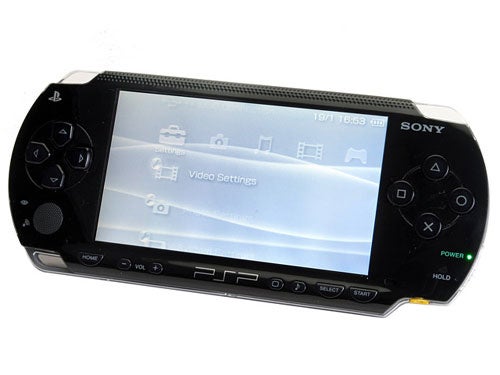
The PSP fits in your hand comfortably, and both the controllers and the buttons fall under your thumbs easily. It’s surprisingly light and finding the perfect viewing angle is simple, even with strong ambient light sources. There’s a wrist strap supplied with the PSP, and although it doesn’t look particularly cool, it’s worth using, just in case someone knocks it out of your hand.
If there’s one problem with the PSP’s slick black design, it’s the fact that it’s a magnet for fingerprints and greasy smears. It sometimes feels like the PSP just pulls fingerprints out of the atmosphere, because even after you’ve just wiped it clean, fingerprints will appear before you’ve even picked it up!
The power switch on the right is spring loaded – push it forward and it will power the unit on and return to its original position; push it forward again and it will power the device off and once again return to its place. If you push the switch backwards it will click into place and lock all the buttons on the unit.
On the left is another switch, this time to enable and disable the integrated WiFi adapter. Yes, Sony has equipped the PSP with 802.11b wireless networking. There are two main reasons for the inclusion of WiFi. First and foremost is the ability for multiple PSP users to link up and play games together – wireless networking is a far more elegant solution than having loads of players huddled round in a circle connected by trailing wires. The other reason is to allow the PSP to connect to the Internet via a wireless access point and download firmware upgrades.
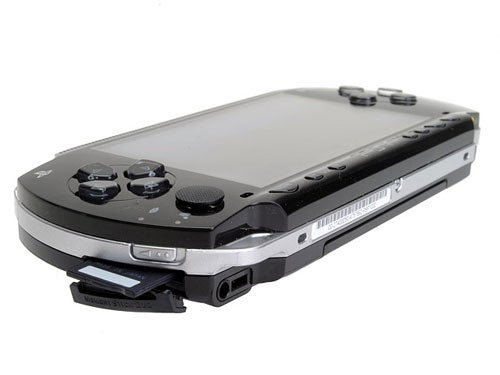
There are a lot of rumours that Sony will be releasing a new firmware revision that will allow the PSP to be used for web browsing, email and even word processing, but the main reason for firmware upgrades seems to be to close up security loopholes. Some smart cookies out there have already worked out how to turn a PSP into an emulator for other console formats, but Sony isn’t too keen on this “home brew” style of gaming. In fact, Sony has even started forcing firmware upgrades in order to play some new games, in an attempt to circumvent this problem.
Next to the WiFi switch is a small hatch that hides the MemoryStick Duo port. It’s a pretty smart move to incorporate MemoryStick Duo into the PSP, since it will instantly increase the user base for Sony’s tiny memory cards. I purchased the Japanese PSP Value Pack which came with a 32MB MemoryStick Duo card in the box, which is handy for game saves and photos, but not really large enough for music or video. You can however, pick up a 512MB SanDisk MemoryStick Duo Pro card for around £46 from Komplett, which should keep you going for a while.
At the top of the casing you’ll find a mini-USB connector, an infrared port and the eject switch for the UMD drive. Flicking the eject switch causes the central rear portion of the PSP to open up – you can then slide in a UMD disc and close it up again. In case you don’t know already, UMD stands for Universal Media Disc and this is the format that the PSP games ship on. The UMD discs have a diameter of about 60mm and a capacity of 1.8GB. They remind me of MiniDiscs, but there’s no sliding metal cover to protect the disc surface. With this in mind, I would have liked to have seen some kind of case for the UMD discs, but alas they are bare once you take them out of the game box. No doubt there will be third party slip cases appearing soon enough though.
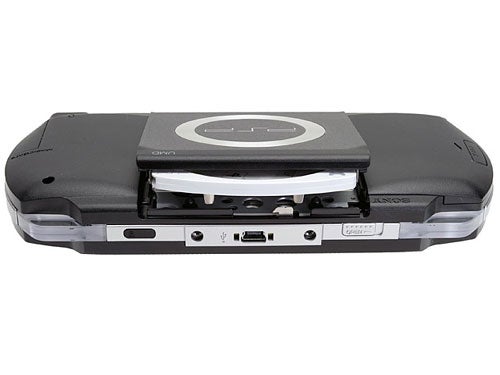
When you turn the PSP on you’re greeted by the XMB or Cross (X) Media Bar GUI. Here you’ll find a plethora of icons to investigate, all of which give you a good idea of what the PSP is capable of. If you have a UMD game disc inserted, you’ll get a preview of the game when you highlight the UMD icon – this is a pretty cool feature and saves you having to eject the disc to see what game is loaded.
There’s been some discussion about the long load times on the PSP, and you obviously do find yourself waiting more than you would on a cartridge based machine. But you’re not left waiting for too long, and when the game does start, you’ll realise that the wait was worth it. I got a copy of Ridge Racers with my PSP, and any PlayStation fan will know that Ridge Racer titles have accompanied every Sony console so far.
When I fired up Ridge Racers for the first time, I let it run through the introduction movie, and I was amazed at the graphics before me. But when I actually launched a game, I realised that Sony had achieved something very special with the PSP – it had managed to place a PlayStation 2 in the palms of my hands. The graphics on Ridge Racers are fantastic and just wipe the floor with any other hand-held game I’ve seen. There’s also an incredible feeling of speed when you’re driving and some nice motion blur effects thrown in for good measure. Considering that Ridge Racers is a first generation title, it’s fair to say that the PSP games are just going to get better and better.
The graphics shouldn’t get all the credit though, because the sound is equally impressive. The integrated stereo speakers do their best to create an immersive sound stage, but you really need to plug in some headphones to get the true aural effect. The Value Pack also comes with a set of official Sony PSP headphones, complete with inline remote control, so that base is well covered.
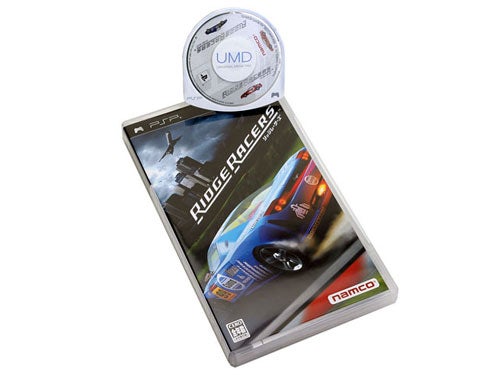
Most importantly though, unlike the PS2, the PSP is launching with a strong line up of games – Ridge Racers, FIFA, WipeOut and Tiger Woods Golf are all grade A titles, while Virtua Tennis is, quite simply, staggeringly good (there’ll be a full review of VT up in the next few days).
Although playing any of the above games by yourself is an amazing experience, it’s when you find another PSP warrior and link up via WiFi that things get really good. While I was flying to Taiwan in June I ended up playing FIFA Football with a total stranger a few rows in front of me – it was superb and beating a real person made a nice change from thrashing the computer. Likewise, while flying to San Francisco for IDF, I linked up with Wil from Bit-Tech for some WipeOut action and got my butt kicked – it was only the second time I’d played it though; that’s my excuse and I’m sticking to it.
But the PSP is so much more than just a hand-held gaming machine. From the XMB graphical user interface, you can gain access to a whole host of other features. The most impressive feature has to be the MPEG4 movie playback. If you have a large enough MemoryStick Duo card, you could copy a whole movie to it and use the PSP to view it. To test this function SanDisk kindly supplied me with a 1GB MemoryStick Duo Pro card. Unfortunately, all video has to be converted before the PSP can play it back, but you can download a free file converter here – it’s in Japanese, but you should be able to find detailed English instructions with a little help from Google.
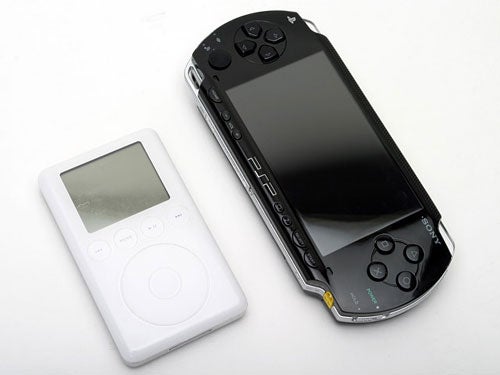
The conversion process is remarkably quick, and then it’s just a matter of copying the MPEG4 file over to the MemoryStick Duo card in your PSP. This can be done in two ways, you can either connect the PSP to your PC via USB – it will then be seen as a removable drive – or you can place the card into a card reader and copy the file over. The video playback is excellent, and makes good use of the fabulous screen. Of course the quality of the video is dependant on the original footage, but if you rip your (legally owned) DVDs and convert them, the PSP will make a very high quality mobile movie machine.
Another way to show off the screen is to transfer digital photos to your MemoryStick. The PSP is great for showing slide-shows, and you can view the images in standard 4:3 ratio, with bars down the side, or you can make them fill the whole widescreen. The latter option doesn’t stretch the image, instead it crops it to fit the screen shape – you can then move the picture around to decide which bits you’re happy to have cropped and which bits you definitely want to see.
There was some worry initially that the PSP would only playback ATRAC music files, but I’m pleased to confirm that the PlayStation Portable will happily play MP3 files without the need for any conversion. The sound quality is first rate, especially with a decent set of headphones. Thankfully the remote control is inline, so you can use any headphones you like, while maintaining the remote functionality. After all, you don’t want to be taking the PSP out of your bag every time you want to change the track.
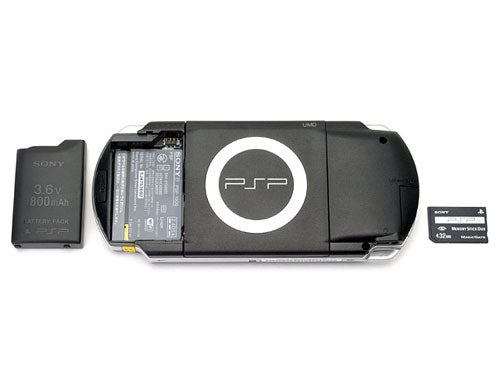
Oh, I almost forgot about the battery. Behind a removable plastic cover at the rear is the battery compartment. The PSP uses an 1800mAh Li-ion battery pack, that’s thankfully replaceable. You’ll get around three and a half hours of battery life when playing a heavy duty game like Ridge Racers, but obviously you’ll get better with a more basic game, or listening to music. Of course if you’re at home, you can simply plug in the power supply and play to your heart’s content, but if you are on a long journey and want to play the whole way, you do have the option of carrying multiple batteries with you. Of course it comes as no surprise that third party battery solutions are already on offer. We spotted Datel X2 last week, which is quoted to give you double the battery life of the original PSP battery. Hopefully I’ll have one of these in for review soon, so check back for the full lowdown.
It’s not surprising that the battery life is limited, when you consider the size of the screen and the fact that there are two MIPS R4000 processors inside, both running at 333MHz. The PSP is the most powerful hand-held gaming console ever built and as such, it draws a fair amount of juice. That said, the rumour is that Sony is limiting the speed at which the chips run in order to make the battery last as long as possible. If this is true, we can expect the second generation games to be something very special indeed, once the battery technology improves and Sony opens up the throttle on the chips.
The biggest worry with the PSP is damaging it – especially scratching that lovely screen. My Value Pack came with a padded carrying pouch to protect the unit, and this is most definitely a “must have” item. You’d only need to put the PSP in your bag unprotected once in order for that screen to get ruined – something that’s been the bane of many an iPod. There are already third party screen protectors available, and I can see myself investing in one of these very soon.
Of course with all of this power, stylish design and generous feature set on offer, the PSP isn’t going to be cheap – but ultimately cost must be seen as relative to the product. The PSP will go on sale in the UK for £179.99, which, in my mind at least, is an absolute steal for such an advanced device. I bought my import unit from Hong Kong based Internet supplier Lik-Sang, and paid £234 WAY back in January, which is a fair price considering the demand back then. I ordered the PSP on a Wednesday and it arrived at my door on the following Monday – not bad, although I also got stung for VAT and duty.
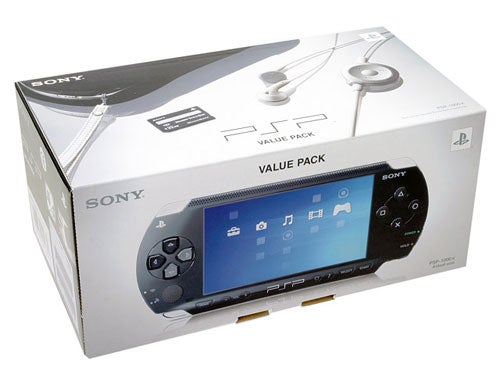
If, like me, you’ve been trying to lower your expectations of the PSP for fear of disappointment, don’t worry. The PSP is an awesome product, and anyone with an interest in gaming, or even just consumer electronics devices needs one in their bag at all times.
But thinking of the PSP only as a mobile gaming device is missing the point slightly. OK, it’s an awesome bit of kit to be carrying with you where ever you go, but it’s just as compelling when you’re sitting at home. In my living room I have a UK Xbox, a US Xbox, a PlayStation 2 and a GameCube, but I still find myself sitting on my sofa playing my PSP instead – yes, it really is that good.
”’Verdict”’
Sony has redefined mobile gaming with the PlayStation Portable. I never imagined that the PSP would be this good, and this is one product that has to be seen to be believed. When Sony released the original PlayStation, the balance of power in console gaming shifted away from Nintendo. Now that the PSP is here, I expect to see the same thing happen in the hand-held gaming market.

